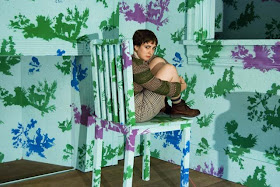
Salzburg, as I arrive for my first Festival day, presents itself in a fine drizzle and layer upon layer of moist gray along the Salzach river between Mönchsberg and Kapuzinerberg, the two (of five) prominent mountains you see entering Salzburg from the north-west. For a few moments the sky interrupts the polite presentation of the wet stuff, and a cup of coffee atop the Felsenreitschule brings back that warm Festival glow and memories mixed with anticipation. International colleagues, friends, will soon arrive from the US, Canada (via Berlin), Denmark, Munich et al. and transform the sometimes lonely critic’s existence into a cultural summer camp with fraternal overtones and pocket protectors. Journalists who don’t yet know another are brought together in (and by) the Media Center, the source for tickets, free coffee and sweets (from the sponsor Nestlé), professional gossip, and charming staff. With almost frightful confirmation of cultural clichés, Anglo and non-German speaking, north-western European journalists readily mingle, the rest, however, stay fiercely separate from another, limited from fruitful discourse either by lack of the necessary language- or social skills.
Chamber Concert 1
Mozart’s G-minor Quintet started with tender spunk in the long Allegro, followed by a slightly gluey Menuetto. The Adagio, for some hard to discern reason—perhaps for being overwrought, didn’t quite take to its natural gorgeousness. But in the Adagio – Allegro the players returned to the energy of the first movement and all my nitpicking could find was the perfectly fine but ordinary pizzicato of the cello… pizzicato being a field across all stringed instruments where a lot more imagination and experimentation could do a world of good.
The wonderfully teasing long lines of eventually dissolving (dis)harmonies in the first movement of Korngold’s String Sextet op.10 offer everything from Straussian twists to Schoenbergian Verklärte Nacht atmosphere to gutsy roughness. Written at the age of 17, an age Korngold had already hit one (of several) artistic peaks, the Sextet was a great public and critical success when it was finally premiered in 1917 by the Arnold Rosé Quartet. The Adagio, the earliest among the movements, is the most daring in its play with harmony and dissonance, the Intermezzo the most Korngold-typical for its Viennese gaiety and the “Motive of the Cheerful Heart” that he loved to sneak into his compositions. The rowdy, racing finale recapitulates elements from the preceding movements and the same principled-yet-enthusiastic chamber playing that propelled the Schulhoff to such heights was on display again from Jansen & Co.












